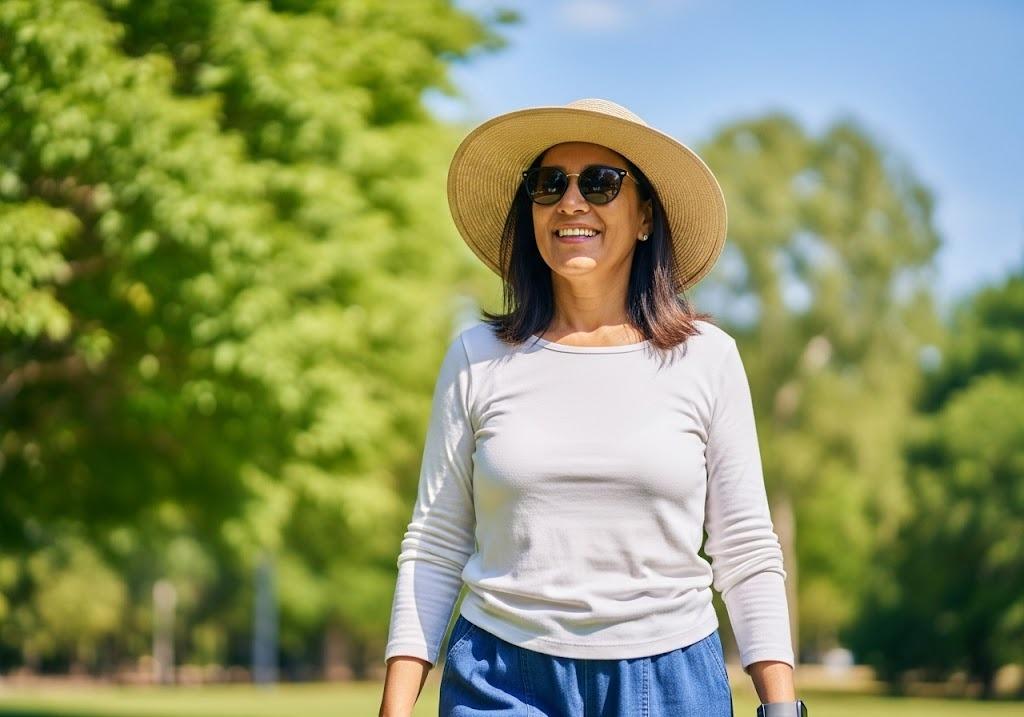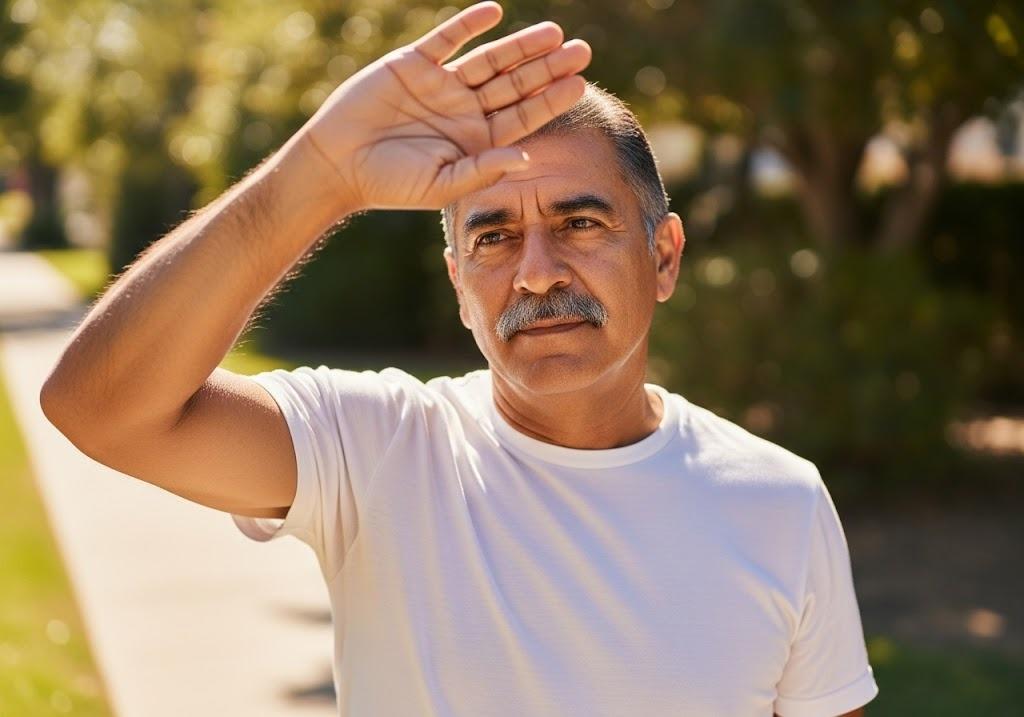Cumulative sun exposure can leave behind more than just wrinkles. For many residents in the Rio Grande Valley—including Weslaco, Harlingen, and McAllen—it results in rough, crusty, or discolored spots that may signal actinic keratosis, a condition that needs medical attention.
Left untreated, these spots may evolve into skin cancer. Fortunately, there is a safe, fast, and effective solution: sun damage skin spot freezing, also known as cryotherapy.
At RGV Direct Care, we treat these lesions in-office using liquid nitrogen. This helps patients regain skin health without needing costly referrals.
Let’s explore what causes these spots, how freezing works, and why this treatment matters. You can also learn more about our values and approach by visiting our About Us page.
A Simple Yet Powerful Approach
Cryotherapy offers more than cosmetic improvement. It helps remove precancerous cells before they develop into something more serious.
The treatment is efficient and minimally invasive. It requires no surgery or complex preparation.
While the process may sound intimidating, the reality is that cryotherapy is one of the simplest and most accessible interventions available for sun-damaged skin. It’s a proactive way to maintain long-term health.
RGV Direct Care takes every patient’s history and risk profile into account. We determine the best course of action with a personalized approach. This ensures that care plans are not only safe but also sustainable for the individual.

What Are Actinic Keratoses and Why They Matter
Actinic keratoses (AKs) are rough, scaly patches that develop from years of UV radiation exposure. These lesions occur when skin cells are damaged by the sun and begin to grow abnormally.
They are often found on the face, ears, scalp, neck, and forearms. AKs are considered pre-cancerous and should not be ignored.
Early Signs and Long-Term Risks
Up to 10% of untreated AKs may progress into squamous cell carcinoma. This is a common type of skin cancer.
Early treatment is not only cosmetic but also preventive. Patients typically notice AKs as dry, pink, tan, or red spots that feel rough to the touch.
They may itch or sting, and sometimes they come and go. These changes signal that the skin is struggling to repair itself.
Identifying and treating AKs early protects surrounding tissue. It also helps prevent further damage.
Diagnostic Importance and Patient Safety
These lesions are more than just signs of sun exposure. They are markers of cumulative skin damage that signal deeper vulnerability.
The skin has likely undergone repeated injury and repair cycles. This makes it less able to protect itself over time.
Even if a spot isn’t currently problematic, its history may warrant removal. At RGV Direct Care, we focus on preventing minor concerns from becoming major ones.
To understand more about the primary care treatments we provide, explore our full list of services.
Sun Damage Skin Spot Freezing: How the Treatment Works
Cryotherapy, or spot freezing, involves applying liquid nitrogen to the affected area. The extreme cold destroys the abnormal cells.
This prompts the body to shed the damaged tissue and generate healthy new skin. At RGV Direct Care, it’s a straightforward in-office procedure.
The Science of Cryotherapy
A small nozzle or cotton swab delivers the liquid nitrogen. Within seconds, the spot turns white and freezes.
Freezing works by creating a controlled injury to the skin. The cold penetrates deeply enough to disrupt abnormal tissue while sparing healthy cells.
The treated area forms a scab or blister as it heals. Damaged cells are sloughed off and replaced with fresh, healthy skin.
A follow-up may be scheduled if the spot needs further clearance.
Benefits of Spot Freezing for Sun-Damaged Skin
Cryotherapy offers several key advantages. It’s quick and effective, often resolving the issue in one visit.
It avoids the need for surgery or extended medication use. The risk of infection or scarring is low when performed properly.
Early treatment prevents escalation into skin cancer. For our patients in Weslaco, Harlingen, and McAllen, that brings peace of mind.
For more guidance and education on treatments like this, visit our blog.
Convenient, Safe, and Effective
Cryotherapy is widely accessible. It doesn’t require anesthesia, incisions, or lengthy downtime.
This makes it ideal for primary care clinics like ours. Real-time evaluation and same-day treatment are possible.
Cryotherapy can be used alone or with other skin therapies. We customize each plan based on patient needs.
Patients with multiple lesions may get cryotherapy for the most concerning spots. Others can be treated with topical therapy.
We tailor treatment plans to match lifestyle, risk level, and budget. Cryotherapy’s long history of success makes it a reliable option.

When to Return for Follow-Up
Patients with recurring sun exposure may need additional visits. New spots can develop in high-risk areas.
Regular skin checks are a vital part of prevention. We monitor skin health as part of your wellness plan.
These visits allow us to assess past treatment and spot new concerns. We also review your sun protection and nutrition habits.
Depending on your risk, annual or biannual visits may be recommended. Short checkups help catch issues early.
Have questions or ready to schedule a visit? Feel free to contact us anytime.
Prevention: How to Protect Against Future Sun Damage
After treating existing damage, prevention is key. Daily habits play a big role in long-term skin health.
- Wear SPF 30+ sunscreen daily.
- Reapply sunscreen every two hours when outdoors.
- Avoid midday sun between 10 a.m. and 4 p.m.
- Use wide-brimmed hats, long sleeves, and sunglasses.
Building Sun-Safe Habits
Consistency matters more than intensity. Even light daily exposure adds up over time.
Practice sun safety on cloudy days too. Indoor lighting and driving can also cause skin stress.
Encourage early habits in children. It can reduce their risk in adulthood.
Adults may benefit from reevaluating outdoor routines. Small changes can go a long way.
Hydration and antioxidant-rich foods support skin resilience. Prevention becomes easier when it fits your lifestyle.
Whole-Person Care for Skin Health
Skin conditions reflect deeper body processes. That’s why we treat actinic keratosis holistically.
We examine immune health, inflammation, and nutrition. This helps explain why your skin may be slow to heal.
Treating the Whole Body, Not Just the Spot
We may suggest lab tests to check nutrient levels. Supplements like antioxidants and omega-3s may be helpful.
Anti-inflammatory habits also support recovery. These include stress reduction and better sleep.
We assess hormonal balance and gut health. These factors can impact skin growth.
For patients with recurring lesions, this information guides more effective care. Our goal is to restore overall wellness, not just remove skin spots.
Conclusion
Actinic keratoses are common but not harmless. Without treatment, they can evolve into skin cancer.
Sun damage skin spot freezing is a fast and effective solution. It removes damaged cells and supports healthy skin renewal.
At RGV Direct Care, we offer cryotherapy in a primary care setting. We provide follow-up and prevention strategies as part of your full care plan.
Your Next Step Toward Healthier Skin
Cryotherapy is one step on a longer path. With prevention, support, and routine care, you can reduce future risks.
Whether you’re new to skin treatment or managing recurring spots, we’re here to help. Our team provides expert care with compassion.
Take the next step. Get in touch with RGV Direct Care by calling 956-520-2220, emailing info@RGV-directcare.com, or visiting our clinic at 309 W. Pike Blvd. Suite C in Weslaco, TX. We are open Monday through Wednesday, from 8 a.m. to 5 p.m., and we’re happy to answer any questions you may have.
FAQs
What is sun damage skin spot freezing?
It’s a treatment that uses liquid nitrogen to freeze and remove sun-damaged, precancerous spots like actinic keratoses.
Where are actinic keratoses usually found?
They often appear on sun-exposed areas like the face, ears, scalp, neck, and forearms.
How does cryotherapy work?
It uses extreme cold to destroy abnormal skin cells, which the body then sheds and replaces with healthy tissue.
Is the treatment painful?
Patients may feel a brief sting or cold sensation, but it is generally well-tolerated.
Can new spots appear after treatment?
Yes. Regular skin checks are recommended, especially for patients with ongoing sun exposure.
How can I prevent more sun-damaged spots?
Wear sunscreen daily, use protective clothing, and avoid peak sun hours.

